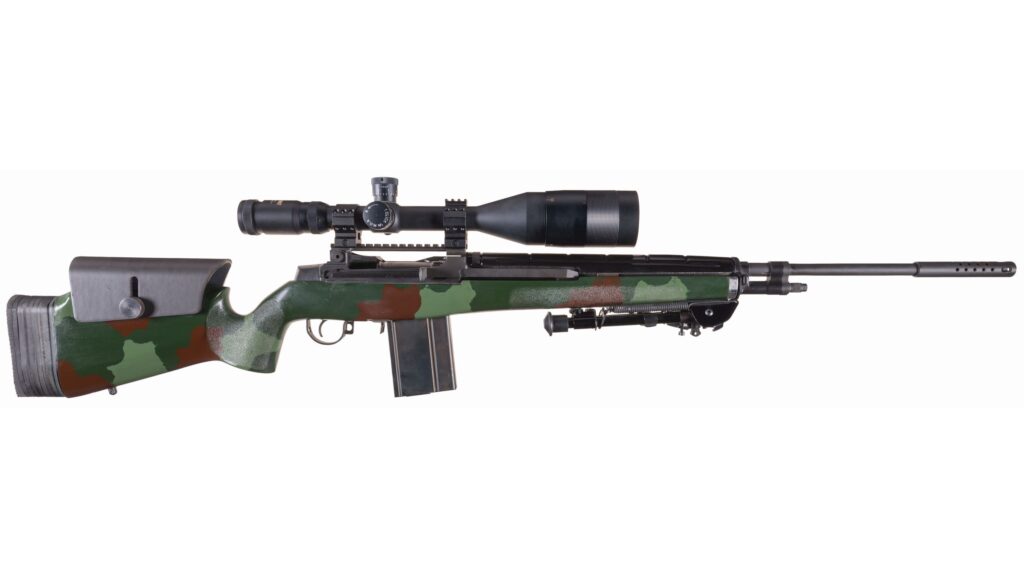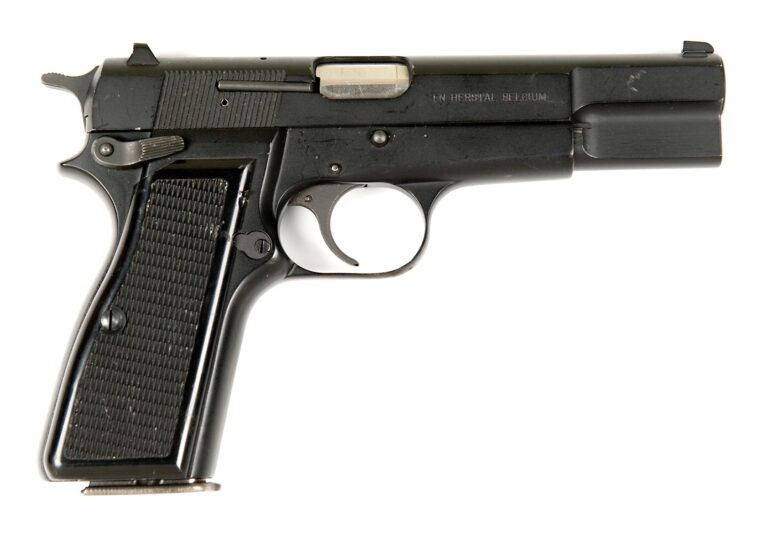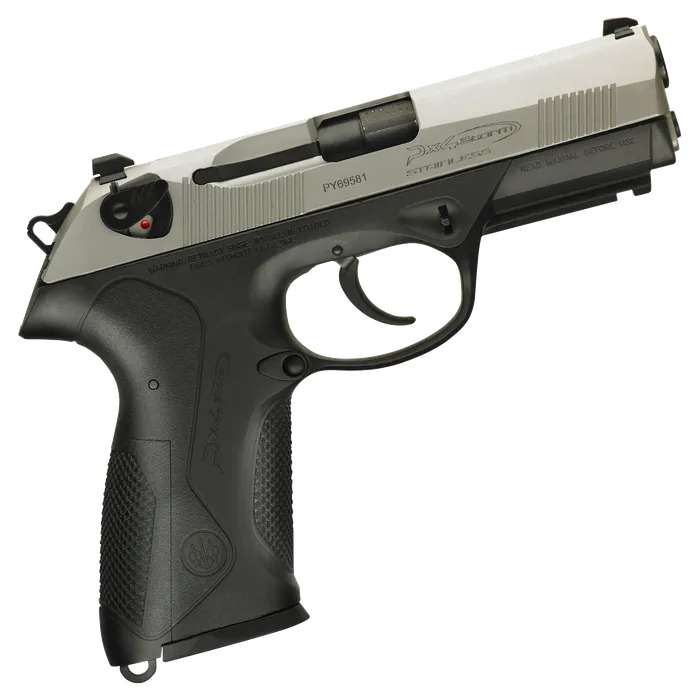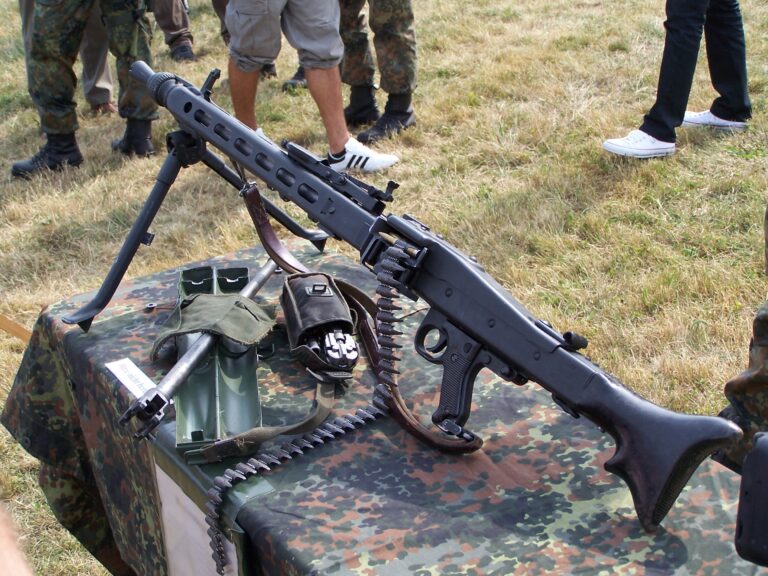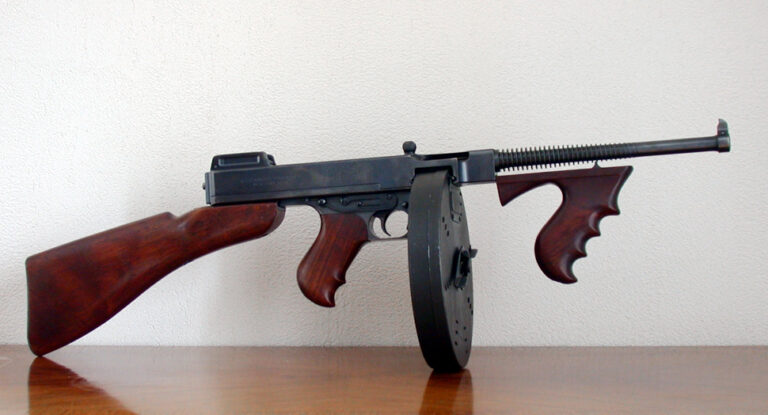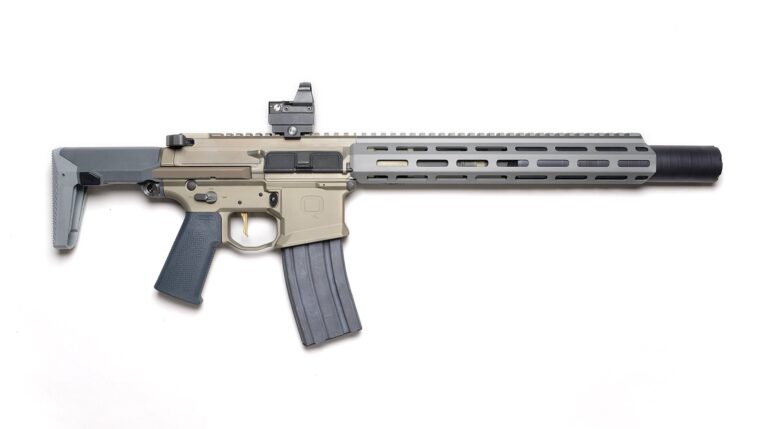Introduction
The M25 Sniper Weapon System, sometimes nicknamed “White Feather” after the famous sniper Carlos Hathcock, is a 7.62×51 mm NATO-caliber semi-automatic sniper rifle. It was developed in the 1990s to provide US special units with a long-range firing system combining the precision of a bolt-action rifle with the responsiveness of a semi-automatic.
An improved evolution of the M21, itself derived from the M14, the M25 embodies the sophistication of craftsmanship applied to a rugged military weapon. Its limited production run, often handmade by Special Forces gunsmiths, gives it a special status in the history of precision weaponry.
Background and development
The M25 saw the light of day in the 1990s, when elite units such as the Navy SEALs, Delta Force and USMC Force Recon were looking for a more reliable and accurate alternative to the M21 used during the Vietnam War.
While the M21 suffered from technical limitations, including fixed optics and difficult maintenance, the M25 aims to correct these weaknesses:
More precise match gun
Modern removable optics
Reinforced mounting system
Customized adjustments by specialized gunsmiths
The rifle is often hand-assembled from selected M14 components, with reinforced parts and a high-quality finish.
Technical specifications
| Features | Detail |
|---|---|
| Caliber | 7.62×51 mm NATO (.308 Win) |
| Capacity | 10 or 20 shots (M14 magazine) |
| Overall length | Approx. 1,120 mm |
| Barrel length | 560 mm (22 inches) |
| Mechanism | Semi-automatic with gas borrowing |
| Canon | Match grade, floating |
| Accuracy | < 1 MOA with Match ammunition |
| Optics | Removable bezel (Leupold M3) |
| Accessories | Bipod, light rail, flame cover |
Construction and ergonomics
The M25 is built on an M14 base but receives a much more meticulous treatment:
Match floating barrel: precision-machined to reduce vibration and improve shooting consistency.
AN/PVS-10 or Leupold optics: removable system for maintenance without disturbing the sight.
Reinforced handguard: prevents contact with the barrel to maintain accuracy.
Harris bipod: commonly used for prone shots.
Flame cover and thread: for silencer or compensator.
The polymer or laminated wood stock is often adapted to the shooter’s preferences, with ergonomic modifications depending on the unit or mission.
Special versions and variants
The M25 does not come in a wide variety of industrial variants like other modern models. Its uniqueness lies in thecustomized assembly carried out by military gunsmiths. Nevertheless, some configurations differ:
M25 US Army
Standard version used by Army snipers, often with Leupold M3 scope and Harris bipod.
M25 Navy SEAL
Slightly different configuration: addition of sound moderators, special mounts for night sights, camo paint.
M25 Civil (replica SR-25 or M1A match)
Civilian versions, often marketed as M1A National Match or Super Match, take their inspiration from the M25 in their configuration.
Comparison with other precision rifles
| Model | Caliber | Mechanism |
|---|---|---|
| M25 | 7.62×51 mm | Semi-auto |
| M21 | 7.62×51 mm | Semi-auto |
| M24 SWS | 7.62×51 mm | Lock |
The M25 improves on the M21 with improved precision, removable optics and greater robustness. Compared to the bolt-on M24, it offers a higher cadence at the expense of a slight loss of precision in extreme conditions.
Operational use
The M25 has been used in several recent conflicts:
Gulf War (1991)
Balkans
Afghanistan and Iraq: used by US Special Forces for its precision and responsiveness.
Although gradually replaced by more modern models such as the M110 SASS, the M25 remains in use in some units for its proven performance and reliability.
Conclusion
The M25 is an elite semi-automatic precision rifle, the result of meticulous engineering and the heritage of the M14. Its use by US special units and its reputation for accuracy make it a sought-after model for military shooters and collectors alike.
Even if it has now been superseded by more recent platforms, it remains a symbol of arms manufacturing expertise focused on performance and adaptation to real battlefield needs.

